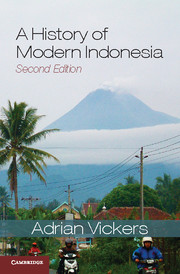Book contents
- Frontmatter
- Contents
- List of figures, maps and tables
- Acknowledgements
- A note on spelling, pronunciation and names
- Chronology
- Introduction
- Chapter 1 Our colonial soil
- Chapter 2 Cultures of the countryside
- Chapter 3 ‘To assail the colonial machine’
- Chapter 4 The Revolution
- Chapter 5 Living in the atomic age
- Chapter 6 From the old order to the new
- Chapter 7 Terror and development in happy land
- Chapter 8 Age of globalisation, age of crisis
- Biographies of key figures
- Abbreviations and glossary
- Notes
- Bibliography
- Index
Introduction
Published online by Cambridge University Press: 05 February 2013
- Frontmatter
- Contents
- List of figures, maps and tables
- Acknowledgements
- A note on spelling, pronunciation and names
- Chronology
- Introduction
- Chapter 1 Our colonial soil
- Chapter 2 Cultures of the countryside
- Chapter 3 ‘To assail the colonial machine’
- Chapter 4 The Revolution
- Chapter 5 Living in the atomic age
- Chapter 6 From the old order to the new
- Chapter 7 Terror and development in happy land
- Chapter 8 Age of globalisation, age of crisis
- Biographies of key figures
- Abbreviations and glossary
- Notes
- Bibliography
- Index
Summary
Indonesia is the fourth-largest country in the world, with a population its government estimates at 240 million. It consists of 19,000 islands strung across the equator, some of these no more than sand spits, others, like Java and Sumatra, large and densely populated. Two of the world's largest islands, Borneo and New Guinea, are partly within Indonesia: Kalimantan is the Indonesian name for its part of Borneo, while Indonesia's half of New Guinea is now called Papua – formerly Irian Jaya. As a country joined by water, Indonesia covers an area as wide as Europe or the United States.
There are more than 200 major cultural and language groups on the islands. Java is the most populous island, with over 130 million people packed together on its 132,000 square kilometres. Jakarta, the national capital with a population of 15 million, is located on the island of Java. Javanese culture dominates the other cultures of Indonesia, but the main language of the nation is a form of Malay called Bahasa Indonesia or Indonesian.
Indonesia is generally featured in the world’s media for its political violence and involvement in international terrorism. It has been rated at the top of international corruption watch lists, and its president between 1967 and 1998, Suharto, was named the head of state who extorted the most personal wealth from his country.
- Type
- Chapter
- Information
- A History of Modern Indonesia , pp. 1 - 8Publisher: Cambridge University PressPrint publication year: 2013



